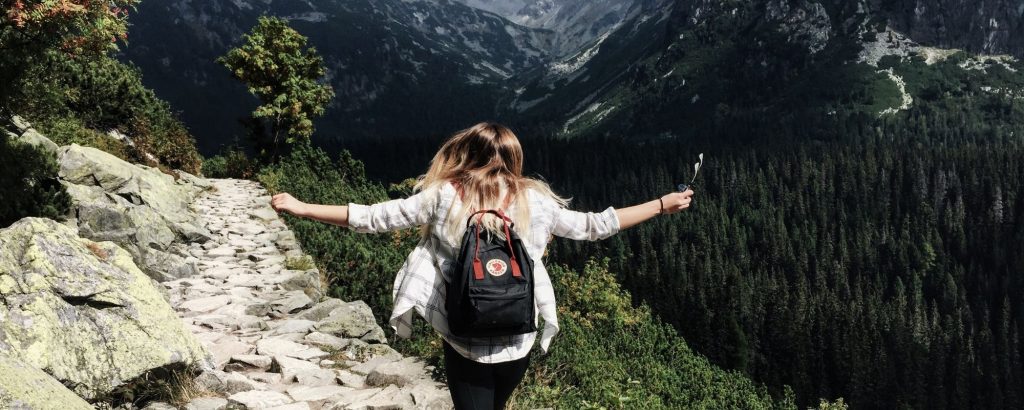There are many ways to make a hike enjoyable as well as sustainable. In our previous article we covered everything you need to think about before you even start your hike; how to choose a trail, what time of year to hike and the best way to travel to your destination.
However, your sustainable decision making doesn’t stop once you reach the trail head. After you have chosen your hiking location, and your environmentally friendly method of transport, there are many different things to consider to ensure that your hike remains sustainable throughout.
You will need to take enough water to stay hydrated during the hike and you may even want to take a few tasty snacks with you to keep your energy levels high, especially if you plan to be out all day. To avoid single-use plastics, fill up your reusable water bottles before you go, or invest in a hydration pack and take that with you. Hydration packs are a convenient way of carrying a lot of water and you don’t have to keep taking your bag off to refuel, which also makes it much easier to stay hydrated.
When purchasing your hydration pack, as well as other hiking equipment, such as clothes and shoes, make sure you research where you are buying from. There are lots of brands available on the market right now, designing sustainable products to help reduce our climate impact. Choose brands which use safe, sustainable materials and use smart manufacturing processes. Even better, you could opt for pre-loved hiking gear; reusing and recycling will mean that less of it ends up on landfill, and you could end up with some really good items that could last for a very long time.
You should also think carefully about the food you want to take with you; on a very hot day it will be difficult to keep certain food items fresh, and you want to avoid any potential food waste if you have to throw it away. Minimise waste as much as possible by taking food in biodegradable packaging or, even better, make your own and store it in reusable containers.
If you decide that you want to extend your outdoor adventure and stay overnight, find a place where it is naturally clear for you to set up camp, to ensure that you don’t damage the environment or vegetation in the process. Again, you can consider the products you bring with you, to make sure they are eco-friendly. As a menstrual cup user, you are already moving in the right direction, but many soaps and shampoos are also made with chemicals that can be harmful to the environment, so you should spend time sourcing some eco-friendly products, in order to avoid this.
Finally, it’s fairly obvious, but whatever you take with you, should come back with you. Leftover rubbish can be harmful to the local ecosystem; animals can mistake it for food which can be potentially fatal, and it can also take hundreds of years for the rubbish to decompose. Take rubbish bags with you; one for waste and one for recycling, and dispose of them correctly when you finish your hike. Leave no trace on the trails, so that you can continue to enjoy them for years to come.

